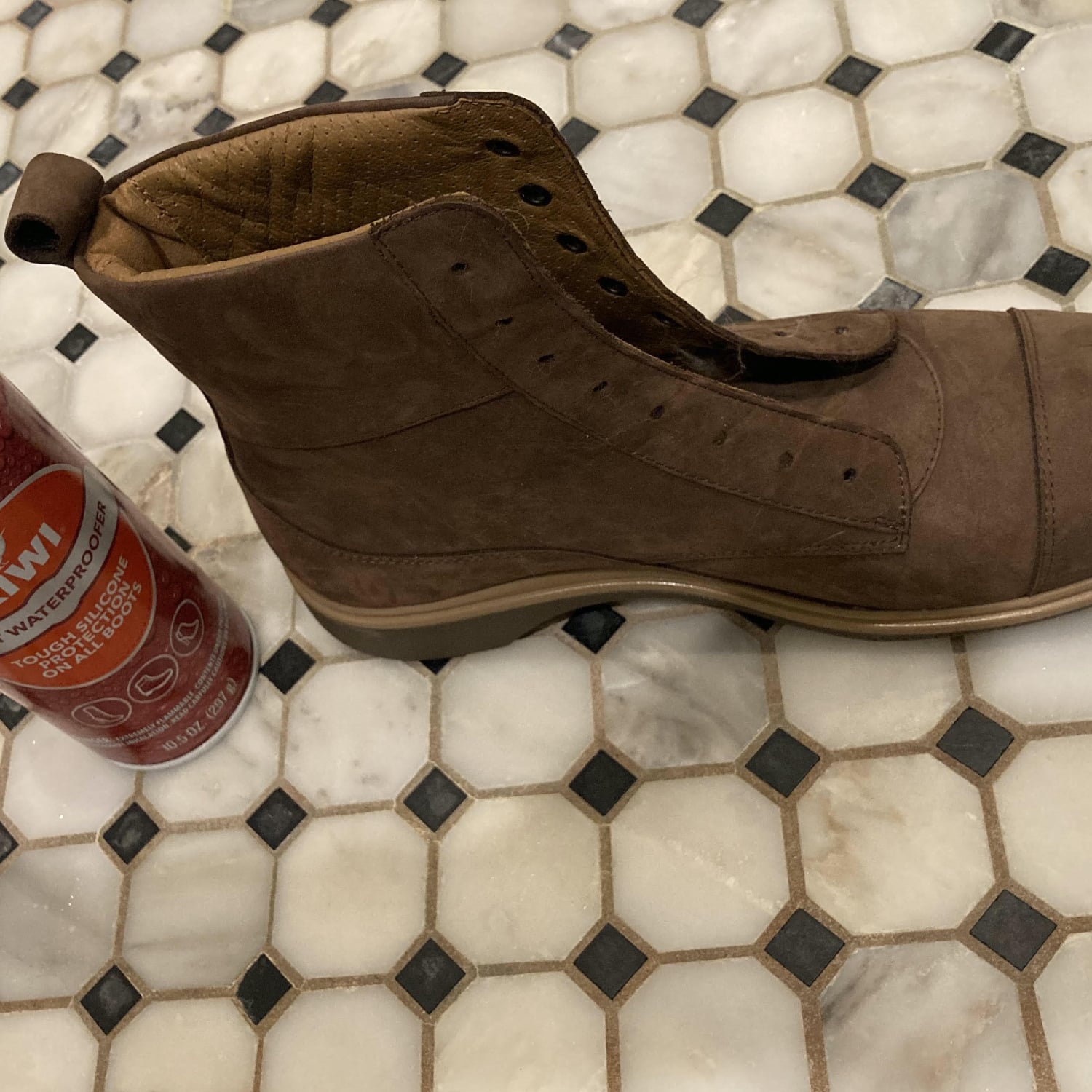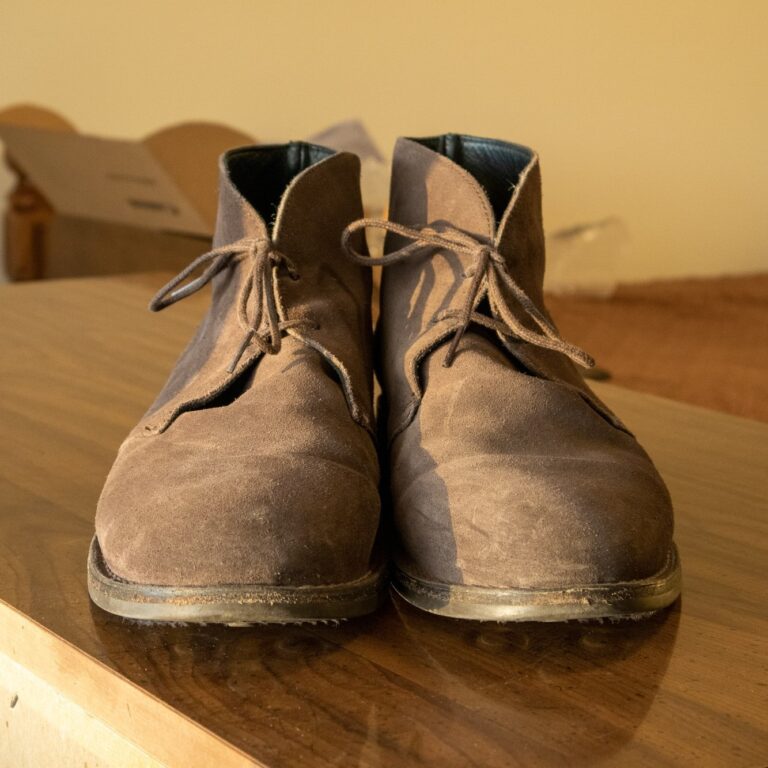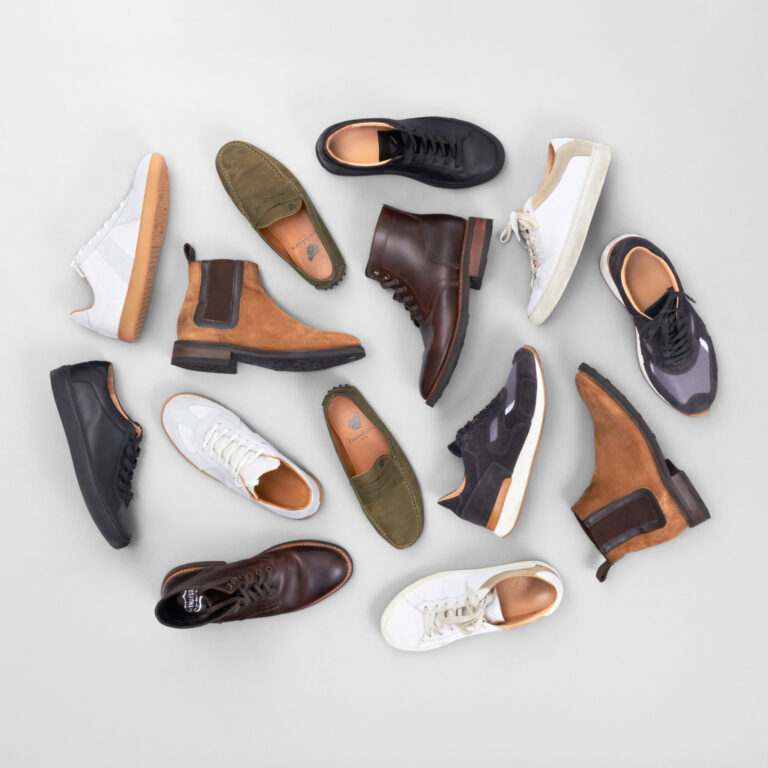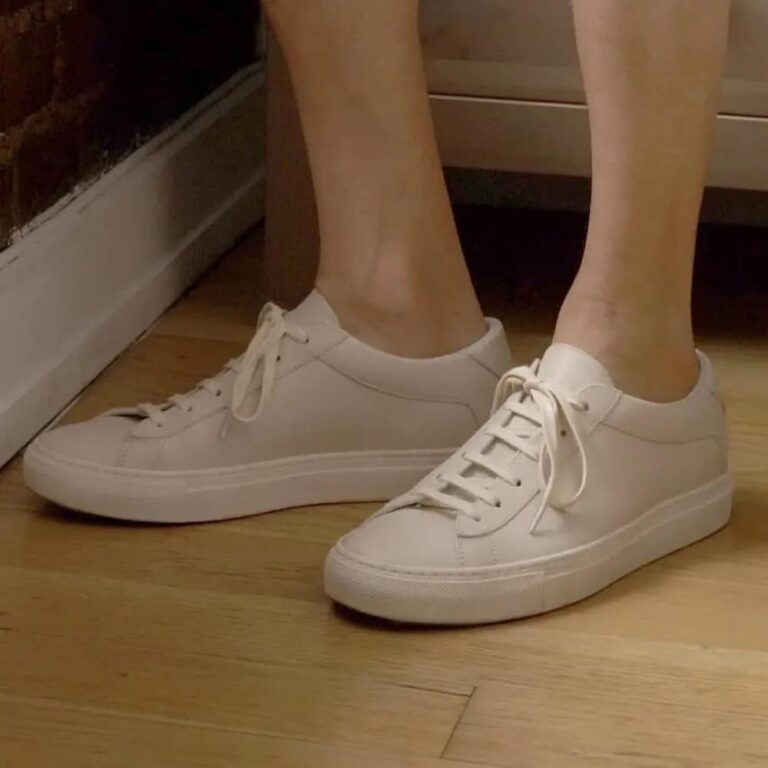
Knowing how to make leather boots waterproof is an essential life skill. Here’s how to do it!

There’s something about the phrase “waterproofing” that sounds like it’s best left to professionals. It’s almost like tinting your own car windows. Sure, anyone can do it. Technically. But it seems so easy to mess up — and so annoying when you do.
But that’s actually not true when it comes to waterproofing leather. It’s especially not true when it comes to waterproofing leather boots.
It’s not only simple, but it’s so important to do too. Call me dramatic, but cold feet and wet boots and socks are a full-on day ruiner. It’s uncomfortable, it feels gross, and letting it happen too often isn’t great for your leather boots (or your feet).
Protect your favorite pieces of footwear and keep your feet dry with these easy and actionable tips.
Best Way to Waterproof Leather Boots
First, you’ll make sure your boots are perfectly clean. Then, you’ll apply the waterproofing products. So, let’s start with your boot ablutions, so to speak.
Cleaning Your Leather Boots
You want to start with this because when you apply waterproofing treatments, you don’t want dirt and debris to get stuck underneath them. Plus, keeping your leather boots clean keeps them strong and reinforced.

Here are some things you’ll need for this:
- Clean cloth (or cloths)
- Hot water in a bowl
- Leather soap, though dish soap, will do just fine
First, you’ll remove the laces and knock any excess dirt off. You can do this by shaking the boots and clapping them together on the soles a few times.
Feel free to throw your laces in some soapy water for a good 15 to 20 minutes if they’re dirty, too.

Then, you’ll dampen your cloth with hot water. Apply a dime-sized amount of soap and lather it up.
Use this cloth to then lather up the entire boot in small circles.
Wipe off the soapy water with another non-soapy wet cloth, then a dry cloth.

Depending on the waterproofing product you’re using, it may require the boots to be wet or they may require entirely dry boots. Make sure to read the product description and follow their specific directions accordingly.
The Waterproofing Process: Types of Waterproofers for Boots
There are several ways to waterproof your shoes.
Below are the most effective, though whichever you go for, you’ll always start your application at the seams. Always apply at least one full coat, ideally two, and always let them dry.
And, of course, give special attention to any cracks or deep creases that look like they might crack.
Use a Wax Treatment
Wax is one of my favorite waterproofing treatments. Using a beeswax-based product, like the tried-and-true Atsko Sno-Seal, ensures water literally slides right off of the surface of your boot.
Lanolin-based products, like Otter Wax, are more pliable than beeswax. Fortunately, you can also get the strength of the latter and the flexibility of the former with waterproofers that use both.
You’ll simply warm up the wax and apply it to your boots with a cloth or even your hands.
The only downside to wax products is that the need to heat them up means they take time to apply, and they make it difficult for new adhesives to bond to the shoe. This makes resoling challenging, that is, unless your boots are welted instead of glued.
Use an Oil Treatment
The benefit of oil-based waterproofers is that they condition as well as protect. They’re often made with mineral, neatsfoot oil, or mink oil, as the Sof Sole Conditioner and Waterproofer is.
I’ve found that oils condition better than they protect, though they’ll do a fine job as a forcefield from moderate rain. The water tends to bead up on the surface and then roll right off.
Moreover, they’re easier and quicker to apply compared to waxes because even the most hardened blocks of oil don’t need as much warming up. And, your boots don’t need to be immaculately clean prior to application because the oils aren’t creating a film that will freeze the dirt particles in place.
If you’re in a hurry, opt for oil over wax. And just as you would with a wax, you’ll simply apply the oil to your boot using a clean, soft cloth.
Both wax and oil are sometimes reformatted into a paste.
Use a Spray Treatment
Though oils are faster to apply than waxes, none are faster than spray treatments — as long as you’re okay with using aerosols. Even more, while oils and waxes are best used on true, full-grain leather, sprays can be used on all sorts of shoe materials, including fake leather.
You’ll usually hold the spray can a good foot away from the boot before steadily and consistently spraying it all over.
Sprays like the Kiwi Waterproofer are great because they don’t leave a film behind.
Fortify Your Shoe With a Seam Sealant
This is an optional step. But, if you use a seam sealant like the urethane-based Gear Aid Sealant, you’ll add extra water protection to your boot’s most vulnerable places.
Do this after you’ve cleaned your boots but prior to the main waterproofing treatment.
How to Waterproof Leather Boots Without Changing Color
Most waterproofers will darken your boots, even if slightly. This can add depth and richness to the color.
However, if you’d rather keep your boots in the same hue they came out of the box in, avoid mink oils. Many neatsfoot oil conditioners, like the Lexol Leather Conditioner, will provide excellent conditioning and decent protection without darkening your shoes.
To keep their color intact, I recommend conditioning your boots using such a conditioner and then using a silicon-based spray after.
I’d strongly encourage testing any waterproofing compound on a hard-to-see part of your boot (like the tongue) prior to applying it to the entire boot.
FAQs
Still, have questions about waterproofing your leather boots? Well, I’ve got answers!
Can You Waterproof Leather Boots With Household Items?
You can use certain woodworking items like polishes and conditioners if they contain the same materials often used in leather, like mink oil and beeswax. To waterproof work boots, a lot of laborers even use WD-40.
Should You Waterproof Leather Boots?
Yes, if you live in a wet or rainy climate, it’s important to waterproof your leather boots. Doing this ensures a longer life for them and a more comfortable experience for you.
Can Waterproofing Treatments Damage Nice Leather Boots?
No. Waterproofers are made with oils, waxes, and even synthetic materials often used in leather conditioners. They’re not just perfectly harmless but beneficial to the health of leather boots.
Conclusion: Force Fields for Your Boots
The reason it’s important to know how to waterproof your boots is that even ones with factory-treated DWR will eventually wear out.
And even those with waterproof membranes can benefit from outside protection as well as interior protection!
Have you ever waterproofed your leather boots before? What products do you prefer? Let us know in the comments!




